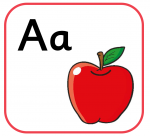Lesson Plan: Fun with Phonics!
Introduction
Welcome to this interactive and engaging phonics lesson plan designed to enhance your pupils' reading and spelling skills! Phonics is a fundamental aspect of literacy development, and with the help of fun and interactive games and activities, your pupils will become confident readers and spellers in no time.
Learning Objectives
- To recognise and pronounce phonemes accurately
- To blend consonant-vowel-consonant (CVC) words
- To segment CVC words into individual phonemes
- To identify and spell high-frequency words
Materials Needed
- Phonics flashcards
- Whiteboard and markers
- Letter tiles
- Mini whiteboards and markers
- Phonics games (e.g., Bingo, Phonics Charades)
- Printable worksheets
Lesson Plan
Warm-up Activity: Phonics Flashcards (10 minutes)
Begin the lesson by reviewing phonics flashcards with the whole class. Show the flashcards one by one and ask the pupils to identify the sound each letter or letter combination makes. Encourage them to make the sound aloud and repeat after you. 
Main Activity: Blending and Segmenting (20 minutes)
Divide the class into small groups and distribute letter tiles to each group. Provide a set of CVC word cards to each group as well. Ask your class to use the letter tiles to build the words on the cards and then sound them out by blending the phonemes together. Encourage them to segment the words into individual phonemes as well.
Once the pupils have practised blending and segmenting, ask them to take turns to be the "teacher" and create their own CVC words for their group members to blend and segment.
Interactive Phonics Games (15 minutes)
Engage the children in interactive phonics games to reinforce their learning. You can play Phonics Bingo, where pupils need to match the sounds you call out to the corresponding letters on their Bingo cards. Another fun game is Phonics Charades, where pupils act out words while others guess the sounds and letters involved.
Independent Practice: Worksheets (15 minutes)
Provide each pupil with a printable worksheet focusing on blending and segmenting CVC words. They can complete the worksheet independently, using their phonics skills to read and spell the target words. Circulate around the classroom to provide support and guidance as needed.
Wrap-up Activity: Mini Whiteboards (10 minutes)
End the lesson with a fun and interactive activity using mini whiteboards. Choose a high-frequency word and write it on the board. The children must spell the word correctly using their whiteboards. Encourage them to think about the sounds they hear in the word and use their phonic knowledge to spell it accurately.
Conclusion
By incorporating interactive phonics games and activities into your literacy lessons, you can create an engaging and effective learning environment for your pupils. Regular practice with phonics will improve their reading and spelling skills, setting them up for future success in their academic journey.
Have fun exploring the world of phonics with your pupils!
Looking for more phonics activities for your KS1 class?
Check our blog - "How to Create Phonics Flashcards for Your KS1 Children"
Did you know? We have a community WhatsApp!
Join now, to stay up-to-date with Mighty Writer workshops, events and giveaways!
